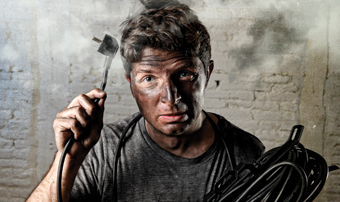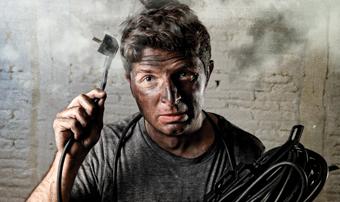

When you’re shopping for electrical equipment, it can be a lot easier to choose the cheaper option. The naked eye can’t detect the quality of the wiring and parts behind the packaging. Lower quality leads are more prone to damage and cracking, and at times, it’s only until something bad happens that safety standards are taken seriously. Be informed and aware. Here’s what to look for to be safe.
Look for the safe sign
Learn to recognise the Regulatory Compliance Mark (RCM) that should be on every piece of electrical equipment that you purchase. This symbol is a new marking issued in 2013 that signifies electrical compliance and links a product to a registered supplier. The registered suppliers are accountable for the quality and safety of their product without having to display the unique approval number issued by the Regulator in their state or territory.
Perform simple visual checks
With a high quality cable extension, you’ll most likely be able to feel its superiority just by holding it in your hand – it’s thicker and the insulation will feel sturdier. Underneath, the wires are made of high purity copper (99.9%+), meaning that they are able to be flexed longer without breaking strands. Cheaper cables often use recycled copper with a lot of impurities that reduce the ductility (flexibility) of the wires. The UV-stabilised insulation sheath makes the cable last longer and less likely to crack or deteriorate under continuous direct sunlight. Even with these advanced technologies, you should always keep an eye out for distressed electrical outlets, wiring and leads.
Take action immediately if you see any of the following:
- Damaged cable sheaths where the outer layer of insulation has broken, revealing the inner cables and wires.
- Damaged plug casings.
- Missing or cracked insulation on the bottom of metal pins (black covering which covers the bottom half of each pin, closest to the plastic casing of the plug).
- Damage to the casing of the electrical equipment, with exposed internal connections and wiring.
- Exposed connectors used to extend cable length by joining two separate pieces of cable.
- Damage to cable clamp where the outer insulation cable is not gripped inside the plug or socket casing.
- The earth wiring has become exposed; loose and detached from inside the casing.
- Scorch or burn marks on a socket casing. This overheating can be due to a poor connection in the socket or in the electrical equipment itself.
If you spot any of the above, fix the issue immediately with the help of a licensed professional. Be safe; make the wise decision to stick to a reputable brand that guarantees quality and invests in compliance. Electricity is something you don’t want to take your chances with.


